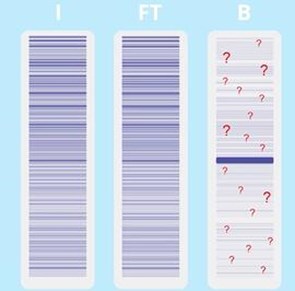How to obtain a low background in immunoprecipitation assays
Tips and tricks for better IP results with GFP-Trap
Introduction
A high background from unspecific binding of proteins is a common problem in immunoprecipitation (IP). In this blog, the origin of background and different optimization strategies are discussed. Furthermore, it is shown how you can achieve a low background when using the ChromoTek GFP-Trap®, a ready to use reagent for IP of a GFP-tagged proteins.
Origin of background in an IP assay
Background in an IP assay results from proteins that that haven’t been removed during the washing steps. These background proteins have often unfolded during cell lysis and hence bind non-specifically to the affinity beads, e.g. by means of interaction via exposed hydrophobic patches. Background proteins are also eluted by SDS sample buffer and show up as additional bands in the bound fraction on the SDS gel.
In detail, unspecific binding of proteins can result from binding to the affinity beads and/or to the affinity reagent, e.g. antibody or Nanobody.

How to avoid non-specific binding to the affinity beads
A straightforward method to remove non-specifically bound proteins is the use of binding control beads (product codes: bab-20 and bmab-20) for pre-clearing. Binding controls are plain beads without coupled Nanobody.
To determine the effectiveness of background protein removal it is recommended to apply the binding control beads according to a standard IP protocol. If protein bands are found in the bound fraction on an SDS gel, binding control beads can be used for pre-clearing to improve the IP results.
Short pre-clearing protocol:
- Lyse cells under standard conditions
- Equilibrate binding control beads
- Add binding control beads to cell lysate
- Rotate end-over-end for 30 min at +4°C
- Separate beads by centrifugation (Agarose beads, bab-20) or magnetic separation (Magnetic Agarose beads, bmab-20)
- Submit pre-cleared lysate to standard IP
In addition, more stringent washing conditions, e.g. adding 0.1% detergent to the wash buffer, can reduce non-specific binding to the bead matrix. However, the application of detergents may not be suitable for Co-IP; this needs to be tested for the individual sample.
How to prevent non-specific binding to the Nanobody
If background proteins bind non-specifically to the GFP Nanobody framework, optimization of the wash buffer is recommended. Since the complex of GFP and the GFP Nanobody is extraordinarily stable, very harsh washing conditions can be applied. Adding detergents (e.g. 0.1% Triton™ X-100 or 0.05% Nonidet™ P40 Substitute) or increasing the salt concentration (e.g. 150-500 mM NaCl) will remove background proteins while the GFP-tagged POI remains bound to the beads.
For the composition of the wash buffer, see below list of compatible ingredients in tested maximum concentration by GFP-Trap affinity resin:
Buffer ingredients |
GFP-Trap Agarose or
|
GFP-Trap Magnetic Particles M-270
|
|
DTT |
1 mM |
10 mM |
|
Glycerol |
30 % |
not tested |
|
Guanidine HCl |
4 M |
not tested |
|
NaCl |
2 M |
2 M |
|
Nonidet™ P40 Substitute |
tested up to 2 % |
tested up to 2 % |
|
SDS |
1 % |
0.2% |
|
TCEP |
0.2 mM |
not tested |
|
Triton™ X-100 |
tested up to 1 % |
tested up to 1 % |
|
Urea |
8 M |
8 M |
Alternatively, background proteins may be captured and removed by a pre-clearing step with a Nano-Trap of another specificity but with similar framework, e.g. TurboGFP-Trap.
Since the ChromoTek GFP-Trap consists of a recombinantly produced GFP Nanobody, there are virtually no lot-to-lot variations. Hence, the wash buffer composition can be used for different GFP-Trap lots without the need of repeated optimization.
How to overcome non-specific binding to plastic consumables
Background can also result from proteins that bind non-specifically to the surface of plastic tubes. To avoid this kind of contamination, it is recommended to transfer the affinity beads to a new tube during the last washing step, always use new tips and low/non-binding tubes and use wash buffers with detergent.
Additional Tips for low background
- Increase the number and length of washing steps to remove non-specific protein background.
- Shorten the incubation time during the binding step. If the incubation time is too long, i.e. when exceeding 60 min at +4°C, protein unfolding and aggregation may occur, which leads to higher background levels (see above). Since the binding reaction of the GFP-Trap is completed after 30 min, a prolonged incubation time doesn’t result in a higher IP yield but in elevated background levels (and potential protein degradation).
- Please note, that a protein band, which appears as background protein, in fact can be a potential binding partner of the POI in Co-IPs.
Watch the video about successful immunoprecipitation with GFP-Trap: